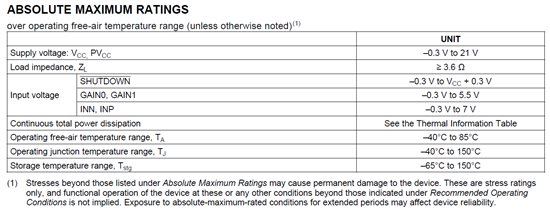A customer asks:
I am using TPA3001D1 to drive a 20W speaker. The audio signal to this chip is on INP ac coupled with a 0.47 uF capacitor. INN is tied to ground.
My question is the audio signal amplitude can swing up to +/- 5 volt do I have to rectify the negative part of the signal or is it OK for the chip?
To increase or decrease the volume can I use an electronics pot to increase or decrease the amplitude at the input?


